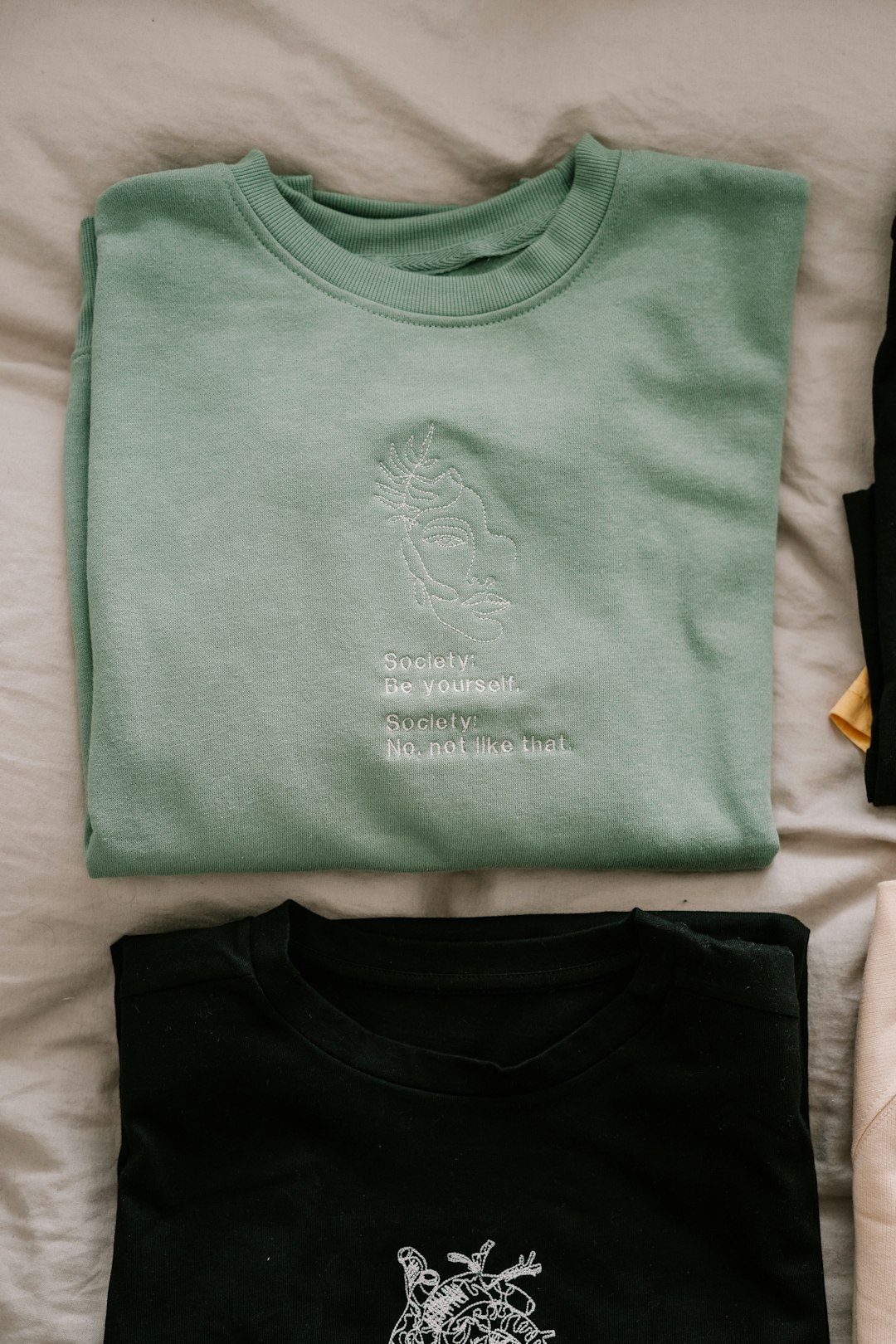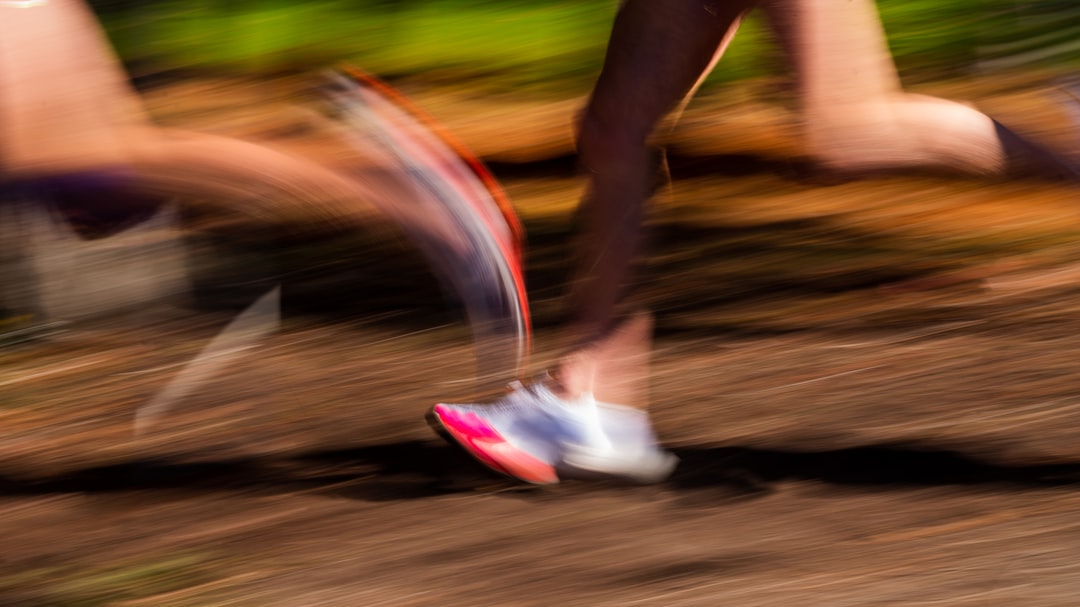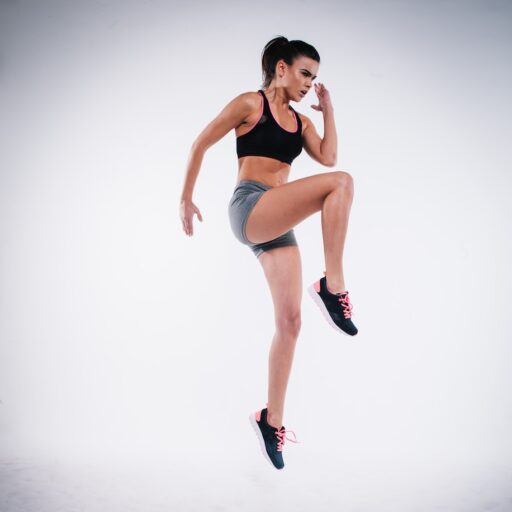Support our educational content for free when you purchase through links on our site. Learn more
The Fierce Competition in Sportswear Industry: 7 Game-Changing Insights (2025) 🏆
Imagine stepping into a stadium where the fiercest athletes battle for gold — now replace those athletes with the world’s biggest sportswear brands. The competition in the sportswear industry is just as intense, with giants like Nike, Adidas, and Lululemon sprinting neck and neck to capture your attention, loyalty, and dollars. Did you know the global sportswear market is expected to surge past $350 billion by 2032? That’s a race worth watching!
In this article, we unravel the secrets behind this fierce rivalry, from groundbreaking innovations and savvy marketing to sustainability battles and emerging disruptors shaking up the scene. Whether you’re an athlete hunting for the perfect gear or a curious consumer wanting to understand why your favorite brand stands out, we’ve got you covered. Stick around — the finish line keeps moving, and the next big leap in sportswear could be just around the corner!
Key Takeaways
- Innovation drives the race: Brands invest heavily in new materials, smart apparel, and customization to gain an edge.
- Brand power and marketing build emotional bonds that keep consumers coming back.
- Sustainability is a game-changer, with eco-friendly products becoming a must-have for conscious buyers.
- Direct-to-consumer models and e-commerce are reshaping how brands connect with customers.
- Emerging niche brands challenge the giants by focusing on community, sustainability, and agility.
- Consumers benefit from fierce competition through better products, more choices, and competitive pricing.
Ready to explore top sportswear brands and gear up for your next workout or lifestyle upgrade? Check out:
- Nike: Amazon | Nike Official
- Adidas: Amazon | Adidas Official
- Lululemon: Amazon | Lululemon Official
Table of Contents
- ⚡️ Quick Tips and Facts: The Sportswear Industry at a Glance
- 🕰️ The Arena of Giants: A Brief History of Sportswear Competition
- 👑 Who’s Who in the Sportswear Jungle? The Major Players and Their Strategies
- 1. Nike: The Unrivaled Titan of Athletic Apparel
- 2. Adidas: The Global Challenger with European Roots
- 3. Lululemon: The Athleisure Innovator and Community Builder
- 4. Under Armour: The Performance Powerhouse for Athletes
- 5. Puma: The Resurgent Contender with a Lifestyle Edge
- 6. New Balance: The Heritage & Innovation Blend
- 7. Emerging Disruptors and Niche Specialists: Keeping the Big Brands on Their Toes
- ⚔️ The Battlegrounds: Key Areas of Competition in Sportswear
- 1. Innovation & Technology: The Performance Edge 🚀
- 2. Branding & Marketing: The Emotional Connection ❤️🔥
- 3. Sustainability & Ethics: The Conscious Consumer’s Choice ♻️
- 4. Price & Accessibility: The Mass Market Appeal 💰
- 5. Distribution & Direct-to-Consumer (DTC): Owning the Customer Journey 📦
- 6. Product Diversification & Lifestyle Integration: Beyond the Gym 🧘♀️
- ⛽ Driving Forces: What Fuels the Fierce Sportswear Rivalry?
- 🚧 Navigating the Labyrinth: Challenges and Hurdles in the Competitive Landscape
- 🌱 The Rise of Niche: How Smaller Brands Carve Their Space in Sportswear
- 🏆 The Consumer’s Win: How Fierce Competition Benefits YOU!
- 🔮 Future Forward: What’s Next for Sportswear Competition?
- Conclusion: The Ever-Evolving Race for Athletic Supremacy
- Recommended Links for Deeper Dives
- FAQ: Your Top Questions About Sportswear Competition Answered
- Reference Links: Our Sources and Further Reading
⚡️ Quick Tips and Facts: The Sportswear Industry at a Glance
Welcome to the fast-paced, ever-evolving world of the sportswear industry! At Athletic Brands™, we’ve been in the trenches, testing gear, and watching the market shake up for years. Here’s a quick snapshot to get you warmed up:
- The global sportswear market is booming, expected to hit $350+ billion by 2032 with a CAGR of around 7.8% (Fortune Business Insights).
- North America dominates with nearly half the market share, but Asia-Pacific is sprinting fast to catch up.
- Key players include Nike, Adidas, Puma, Under Armour, and Lululemon, each battling fiercely for your loyalty.
- The market is a monopolistic competition, meaning brands offer similar products but differentiate through innovation, marketing, and distribution (Community Infest).
- Sustainability, smart apparel, and athleisure are the hottest trends driving competition.
- Counterfeit products remain a thorn in the side, making up over 3% of global trade.
- Consumer health consciousness and rising female sports participation fuel demand.
Want to dive deeper? Check out our detailed guide on Inside the Athletic Apparel Industry: 15 Trends & Insights for 2025 👟.
🕰️ The Arena of Giants: A Brief History of Sportswear Competition

The sportswear industry didn’t become a battlefield overnight. It’s a saga of innovation, branding wars, and cultural shifts.
The Early Days: From Utility to Style
Back in the early 20th century, sportswear was purely functional — think woolen sweaters and leather sneakers. Brands like Adidas and Puma emerged from Germany in the 1940s, carving their niche with innovative cleats and track shoes.
Nike’s Rise: The “Just Do It” Revolution
Nike burst onto the scene in the 1970s, revolutionizing marketing with the iconic “Just Do It” slogan and athlete endorsements. This wasn’t just about shoes; it was about inspiring a lifestyle.
The Athleisure Boom
Fast forward to the 2000s, and sportswear morphed into athleisure — gear you can wear to the gym, brunch, or the office. Brands like Lululemon pioneered this crossover, blending comfort, style, and performance.
The Digital Age & Smart Apparel
Now, with wearable tech and AI, sportswear is smarter than ever. From Under Armour’s collaboration with Fitbit to Nike’s NFT sneakers, the competition is as much about tech as it is about fabric.
👑 Who’s Who in the Sportswear Jungle? The Major Players and Their Strategies
Let’s break down the titans battling for supremacy in this crowded arena.
1. Nike: The Unrivaled Titan of Athletic Apparel
| Aspect | Rating (1-10) |
|---|---|
| Design | 9 |
| Functionality | 9 |
| Innovation | 10 |
| Brand Power | 10 |
| Sustainability | 7 |
Nike is the gold standard. Their secret sauce? Cutting-edge innovation, iconic branding, and a relentless focus on athlete performance. The Vaporfly 3 running shoes and the recent NFT sneaker launch show they’re not just resting on their laurels.
Athlete Insight: “Nike’s gear feels like it was made for me — lightweight, breathable, and stylish. Their marketing? It makes you want to push harder.” — Sarah, marathon runner
2. Adidas: The Global Challenger with European Roots
| Aspect | Rating (1-10) |
|---|---|
| Design | 8 |
| Functionality | 8 |
| Innovation | 8 |
| Brand Power | 9 |
| Sustainability | 9 |
Adidas blends heritage with sustainability — their ocean plastic shoes are a standout. Their “Impossible is Nothing” slogan resonates globally, and they’re strong in soccer and lifestyle segments.
3. Lululemon: The Athleisure Innovator and Community Builder
| Aspect | Rating (1-10) |
|---|---|
| Design | 9 |
| Functionality | 8 |
| Innovation | 7 |
| Brand Power | 8 |
| Sustainability | 8 |
Lululemon’s niche? Yoga-inspired athleisure that’s both functional and fashion-forward. Their community events and tech hubs (like Bangalore) keep them ahead in innovation and customer loyalty.
4. Under Armour: The Performance Powerhouse for Athletes
| Aspect | Rating (1-10) |
|---|---|
| Design | 7 |
| Functionality | 9 |
| Innovation | 8 |
| Brand Power | 7 |
| Sustainability | 6 |
Known for performance gear, Under Armour’s partnership with Fitbit and focus on smart apparel make them a tech-savvy contender. Their “I Will” campaign is all about grit.
5. Puma: The Resurgent Contender with a Lifestyle Edge
| Aspect | Rating (1-10) |
|---|---|
| Design | 8 |
| Functionality | 7 |
| Innovation | 7 |
| Brand Power | 7 |
| Sustainability | 7 |
Puma’s comeback story is inspiring — they blend sports and lifestyle with collections like SEASONS and a strong presence in India.
6. New Balance: The Heritage & Innovation Blend
| Aspect | Rating (1-10) |
|---|---|
| Design | 7 |
| Functionality | 8 |
| Innovation | 7 |
| Brand Power | 6 |
| Sustainability | 7 |
New Balance is the underdog with a loyal fan base, focusing on comfort and quality craftsmanship.
7. Emerging Disruptors and Niche Specialists: Keeping the Big Brands on Their Toes
Brands like Gymshark, Allbirds, and Outdoor Voices are shaking things up with DTC models, sustainability, and niche communities.
⚔️ The Battlegrounds: Key Areas of Competition in Sportswear
1. Innovation & Technology: The Performance Edge 🚀
Innovation is the heartbeat of sportswear. From Nike’s Flyknit to Adidas’ Boost cushioning, technology drives performance gains and consumer excitement.
- Smart apparel: Sensors embedded in clothing track biometrics.
- Materials: Lightweight, moisture-wicking, and recycled fabrics.
- Customization: Personalized fit and style options.
2. Branding & Marketing: The Emotional Connection ❤️🔥
Slogans like Nike’s “Just Do It” and Puma’s “Forever Faster” aren’t just catchy — they build emotional bonds with consumers.
- Athlete endorsements (Serena Williams, LeBron James)
- Social media campaigns
- Community events and sponsorships
3. Sustainability & Ethics: The Conscious Consumer’s Choice ♻️
Eco-conscious buyers are reshaping the market. Adidas’ ocean plastic shoes and Nike’s Move to Zero campaign show brands are racing to reduce their footprint.
- Use of recycled materials
- Ethical manufacturing practices
- Transparency in supply chains
4. Price & Accessibility: The Mass Market Appeal 💰
Brands balance premium innovation with affordability:
- Nike and Adidas offer entry-level lines.
- Emerging brands use DTC to cut costs.
- Seasonal sales and collaborations boost accessibility.
5. Distribution & Direct-to-Consumer (DTC): Owning the Customer Journey 📦
DTC channels give brands control over:
- Customer data and engagement
- Pricing strategies
- Brand experience
Gymshark and Lululemon excel here, while traditional giants blend retail and online.
6. Product Diversification & Lifestyle Integration: Beyond the Gym 🧘♀️
Sportswear is no longer just for workouts:
- Athleisure blends comfort and style.
- Collaborations with fashion designers.
- Expansion into accessories and tech wearables.
⛽ Driving Forces: What Fuels the Fierce Sportswear Rivalry?
Several factors keep the competition blazing:
- Health consciousness: More people hitting gyms and outdoor sports.
- Female participation: Women’s sportswear is a rapidly growing segment.
- Technological advances: Smart fabrics and wearable tech.
- Globalization: Emerging markets like India and China.
- E-commerce growth: Easier access and personalized shopping.
🚧 Navigating the Labyrinth: Challenges and Hurdles in the Competitive Landscape
The race isn’t without obstacles:
- Counterfeit products: Undermine brand value and revenue.
- Supply chain disruptions: COVID-19 showed how fragile global logistics can be.
- Sustainability costs: Eco-friendly materials can be pricier.
- Market saturation: Differentiating products in a crowded field.
- Consumer expectations: Demand for transparency and authenticity.
🌱 The Rise of Niche: How Smaller Brands Carve Their Space in Sportswear
Smaller brands are nimble and innovative, often focusing on:
- Sustainability: Allbirds uses natural materials.
- Community: Outdoor Voices builds loyal followings.
- Customization: Brands like On Running offer tailored fits.
- DTC models: Cutting out middlemen to offer better prices.
These disruptors force giants to innovate or lose ground.
🏆 The Consumer’s Win: How Fierce Competition Benefits YOU!
Here’s the best part: you win when brands battle it out!
- Better products: Constant innovation means superior gear.
- More choices: From budget to premium, tech to eco-friendly.
- Lower prices: Competition drives deals and discounts.
- Improved shopping experience: Personalized, seamless, and engaging.
Our team at Athletic Brands™ always says: “The competition fuels progress — and that’s your advantage.”
🔮 Future Forward: What’s Next for Sportswear Competition?
Looking ahead, expect:
- Deeper tech integration: AI-driven customization and health monitoring.
- Circular economy models: Brands embracing recycling and resale.
- Hyper-personalization: Tailored gear for individual biomechanics.
- Expansion in emerging markets: Asia and Africa will be hotbeds.
- Cross-industry collaborations: Fashion, tech, and sports merging like never before.
Stay tuned — the race is far from over!
If you’re hungry for more insights or want to explore specific brands and gear, check out our Athletic Brand Guides and Brand Spotlights.
👉 Shop top sportswear brands on Amazon or their official sites:
- Nike: Amazon | Nike Official
- Adidas: Amazon | Adidas Official
- Lululemon: Amazon | Lululemon Official
- Under Armour: Amazon | Under Armour Official
- Puma: Amazon | Puma Official
Ready to gear up and join the race? We’ve got your back every step of the way! 🏃♂️💨
Conclusion: The Ever-Evolving Race for Athletic Supremacy

After sprinting through the sprawling landscape of the sportswear industry, one thing is crystal clear: competition fuels innovation, choice, and quality like nothing else. From the titans like Nike and Adidas to nimble disruptors such as Gymshark and Allbirds, every player is pushing boundaries to win your loyalty.
We’ve seen how brands differentiate themselves through cutting-edge technology, powerful branding, sustainability efforts, and direct-to-consumer strategies. The rise of athleisure and smart apparel has blurred the lines between fashion, fitness, and tech, creating a dynamic market that’s as exciting as it is competitive.
For consumers — that’s you! — this means better gear, more options, and smarter shopping experiences. The challenges brands face, from counterfeit goods to supply chain hurdles, only push them to innovate harder.
If you’re wondering whether to stick with the big names or explore emerging brands, our advice is simple: choose what fits your lifestyle, values, and performance needs. Whether it’s Nike’s relentless innovation, Adidas’ sustainability, or Lululemon’s community vibe, there’s a perfect match out there.
So, gear up and enjoy the race — because in the world of sportswear, the finish line keeps moving forward, and so should you! 🏅
Recommended Links for Deeper Dives and Shopping
👉 Shop Top Sportswear Brands:
- Nike: Amazon | Nike Official Website
- Adidas: Amazon | Adidas Official Website
- Lululemon: Amazon | Lululemon Official Website
- Under Armour: Amazon | Under Armour Official Website
- Puma: Amazon | Puma Official Website
- New Balance: Amazon | New Balance Official Website
Recommended Books on Sportswear Industry & Innovation:
- Shoe Dog: A Memoir by the Creator of Nike by Phil Knight — Amazon Link
- The End of Fashion: How Marketing Changed the Clothing Business Forever by Teri Agins — Amazon Link
- Sustainable Fashion and Textiles: Design Journeys by Kate Fletcher — Amazon Link
FAQ: Your Top Questions About Sportswear Competition Answered

What are the key trends driving competition in the sportswear industry?
The sportswear industry is shaped by several powerful trends:
- Sustainability: Consumers demand eco-friendly materials and ethical production. Brands like Adidas lead with ocean plastic shoes.
- Smart Apparel: Integration of wearable tech and AI for performance tracking is a game-changer.
- Athleisure: The blend of fashion and function expands the market beyond athletes to lifestyle consumers.
- Direct-to-Consumer (DTC): Brands bypass traditional retail to build closer customer relationships and improve margins.
- Personalization: Customizable gear tailored to individual preferences enhances customer loyalty.
These trends create a dynamic environment where brands must innovate continuously to stay relevant.
Read more about “Inside the Athletic Apparel Industry: 15 Trends & Insights for 2025 👟”
How do major athletic brands like Nike and Adidas compete in the global market?
Nike and Adidas compete through a combination of:
- Innovative product development: Nike’s Flyknit and Adidas’ Boost technologies offer unique performance benefits.
- Powerful branding and marketing: Iconic slogans and athlete endorsements build emotional connections.
- Global distribution networks: A mix of retail stores, e-commerce, and partnerships ensures wide accessibility.
- Sustainability initiatives: Both brands invest heavily in reducing environmental impact.
- Cultural relevance: Collaborations with designers and celebrities keep them trendy.
This multi-pronged approach helps them maintain leadership despite intense competition.
What role does innovation play in gaining a competitive edge in the sportswear industry?
Innovation is the lifeblood of sportswear competition. It manifests in:
- Material science: Developing lighter, more breathable, and sustainable fabrics.
- Technology integration: Embedding sensors and AI for real-time performance feedback.
- Design: Creating ergonomically optimized and stylish products.
- Business models: Innovating in DTC sales and customer engagement.
Brands that innovate effectively can command premium pricing, build loyal customers, and differentiate themselves in a crowded market.
How are emerging athletic brands challenging traditional sportswear companies in terms of market share?
Emerging brands challenge incumbents by:
- Nimbleness: Quickly adapting to trends and consumer demands.
- DTC focus: Building direct relationships with customers, offering better prices and personalized experiences.
- Sustainability: Often leading with eco-friendly practices from the start.
- Community building: Creating strong, engaged followings through social media and events.
- Niche specialization: Catering to specific sports, lifestyles, or values ignored by larger brands.
This forces traditional giants to innovate and rethink strategies to maintain market share.
How is sustainability shaping the future of sportswear competition?
Sustainability is no longer optional — it’s a competitive imperative. Brands are investing in:
- Recycled and biodegradable materials
- Transparent supply chains
- Circular economy models (recycling and resale)
- Reducing carbon footprints
Consumers increasingly prefer brands that align with their values, making sustainability a key differentiator.
Read more about “Is Nike the Largest Athletic Company? 10 Facts You Need to Know (2025) 👟”
What impact has COVID-19 had on the sportswear industry competition?
The pandemic disrupted supply chains and retail but accelerated:
- Growth in e-commerce and DTC channels
- Demand for comfortable, versatile athleisure wear
- Innovation in digital marketing and virtual events
Brands that adapted quickly gained a competitive advantage.
Reference Links: Our Sources and Further Reading
- Fortune Business Insights: Sportswear Market Report
- Community Infest: Sportswear Market Analysis
- Lucintel: Sportswear Market Report: Trends, Forecast and Competitive Analysis
- Nike Official Website
- Adidas Official Website
- Lululemon Official Website
- Under Armour Official Website
- Puma Official Website
- New Balance Official Website
Thanks for sticking with us through this deep dive! Now you’re ready to navigate the exciting, competitive world of sportswear like a pro. Stay tuned for more insights and gear reviews from Athletic Brands™!




